-
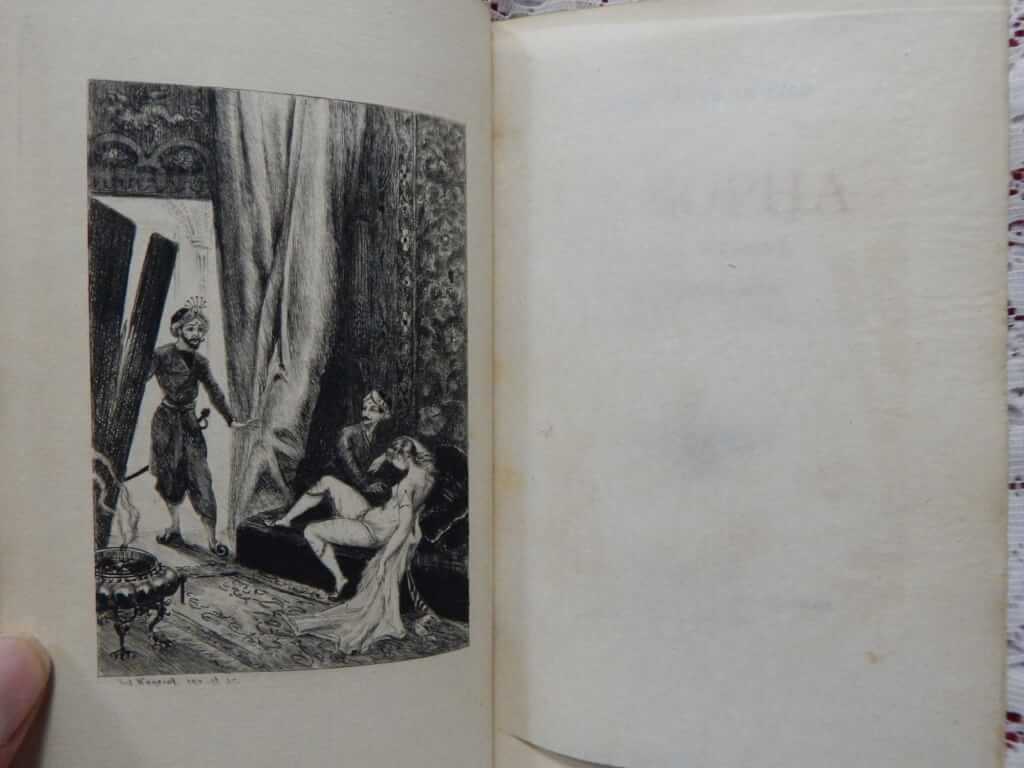
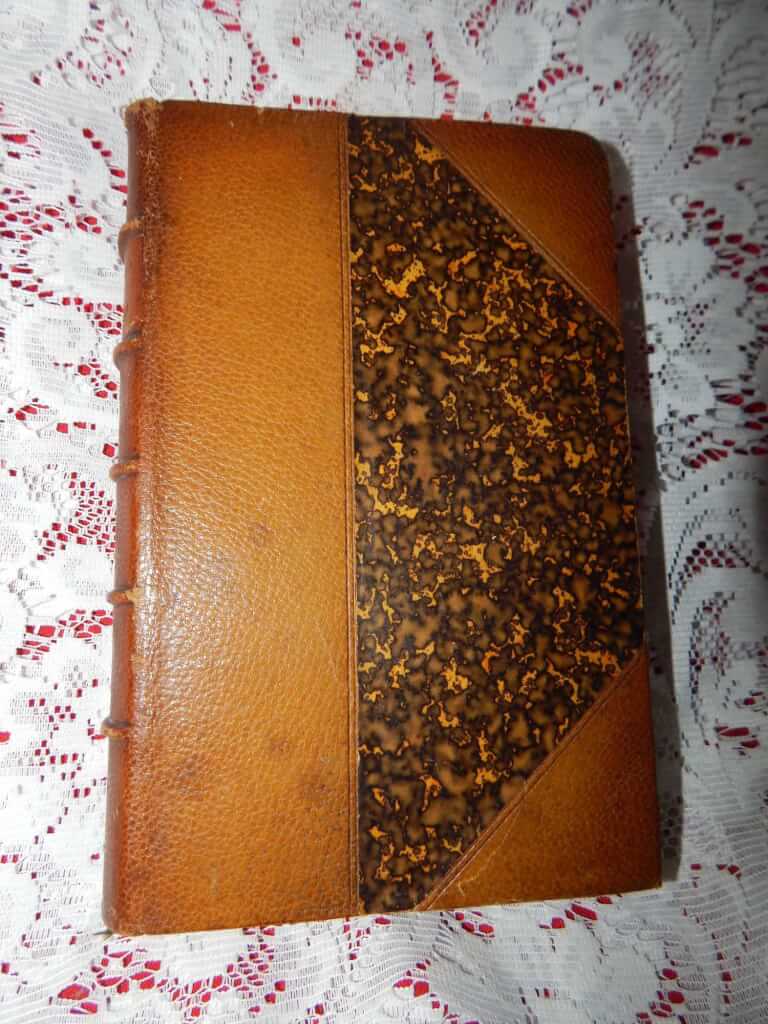 Le Sopha, conte moral by Crébillon fils, illus. Hanriot (Ch. Gilliet, Bruxelles, 1881, #380/550, Imprimerie Clerbaut & Cie.) 5"x7.5", 342pp, 3/4 morocco over marbled boards, 5 raised bands, gilt titles on spine (title worn), marbled endpapers, top-edge gilt, other edges deckled, printed on hand-laid "papier de Hollande", green ribbon intact, frontispiece with tissue guard and 2 small engravings by Hanriot, beautifully bound copy in very good+ condition with delicate engravings Le Sopha, conte moral is a 1742 libertine novel by Claude Prosper Jolyot de Crébillon (Crebillon fils). It was first translated into English in the spring of 1742. The story concerns a young courtier, Amanzéï, whose soul in a previous life was condemned by Brahma to inhabit a series of sofas, and not to be reincarnated in a human body until two virgin lovers had consummated their passion for him. The novel is structured as a frame story in an oriental setting, explicitly evocative of the Arabian Nights, in which Amanzéï recounts the adventures of seven couples, which he witnessed in his sofa form, to the bored sultan Shah Baham (grandson of Shehryār and Scheherazade). The longest episode, that of Zulica, takes up nine chapters; the final episode concerns the teenage Zéïnis et Phéléas. Amanzéï, witnessing their innocent pleasure, is edified and freed through the experience of virtuous love. Many of the characters in the novel are satirical portraits of influential and powerful Parisians of Crébillon’s time; the author takes the opportunity to ridicule hypocrisy in its different forms (worldly respectability, virtue, religious devotion). Claude Prosper Jolyot de Crébillon (1707-1777) was a French novelist. He was called "Crébillon fils" to distinguish him from his father, a famous tragedian, Prosper Jolyot de Crébillon. The publication of Tanzaï et Neadarne, histoire japonaise (1734), which contained thinly veiled attacks on the Papal bull Unigenitus, the cardinal de Rohan and others, landed him briefly in the prison at Vincennes. Although Le Sopha was published anonymously and with a false imprint, Crébillon was discovered to be the author and was exiled to a distance of thirty leagues from Paris on April 7, 1742. He was able to return on July 22, after claiming that the work had been commissioned by Frederick II of Prussia and that it had been published against his will. Jules-Armand Hanriot (1853-1930) was a French painter, engraver and illustrator.
Le Sopha, conte moral by Crébillon fils, illus. Hanriot (Ch. Gilliet, Bruxelles, 1881, #380/550, Imprimerie Clerbaut & Cie.) 5"x7.5", 342pp, 3/4 morocco over marbled boards, 5 raised bands, gilt titles on spine (title worn), marbled endpapers, top-edge gilt, other edges deckled, printed on hand-laid "papier de Hollande", green ribbon intact, frontispiece with tissue guard and 2 small engravings by Hanriot, beautifully bound copy in very good+ condition with delicate engravings Le Sopha, conte moral is a 1742 libertine novel by Claude Prosper Jolyot de Crébillon (Crebillon fils). It was first translated into English in the spring of 1742. The story concerns a young courtier, Amanzéï, whose soul in a previous life was condemned by Brahma to inhabit a series of sofas, and not to be reincarnated in a human body until two virgin lovers had consummated their passion for him. The novel is structured as a frame story in an oriental setting, explicitly evocative of the Arabian Nights, in which Amanzéï recounts the adventures of seven couples, which he witnessed in his sofa form, to the bored sultan Shah Baham (grandson of Shehryār and Scheherazade). The longest episode, that of Zulica, takes up nine chapters; the final episode concerns the teenage Zéïnis et Phéléas. Amanzéï, witnessing their innocent pleasure, is edified and freed through the experience of virtuous love. Many of the characters in the novel are satirical portraits of influential and powerful Parisians of Crébillon’s time; the author takes the opportunity to ridicule hypocrisy in its different forms (worldly respectability, virtue, religious devotion). Claude Prosper Jolyot de Crébillon (1707-1777) was a French novelist. He was called "Crébillon fils" to distinguish him from his father, a famous tragedian, Prosper Jolyot de Crébillon. The publication of Tanzaï et Neadarne, histoire japonaise (1734), which contained thinly veiled attacks on the Papal bull Unigenitus, the cardinal de Rohan and others, landed him briefly in the prison at Vincennes. Although Le Sopha was published anonymously and with a false imprint, Crébillon was discovered to be the author and was exiled to a distance of thirty leagues from Paris on April 7, 1742. He was able to return on July 22, after claiming that the work had been commissioned by Frederick II of Prussia and that it had been published against his will. Jules-Armand Hanriot (1853-1930) was a French painter, engraver and illustrator. -
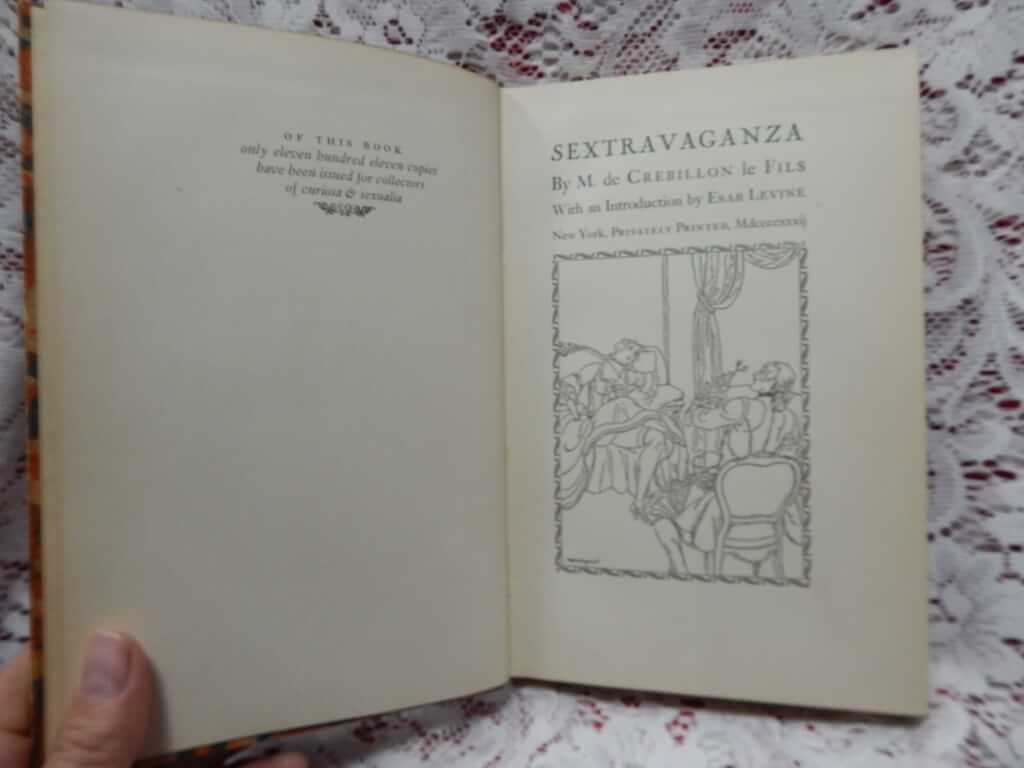
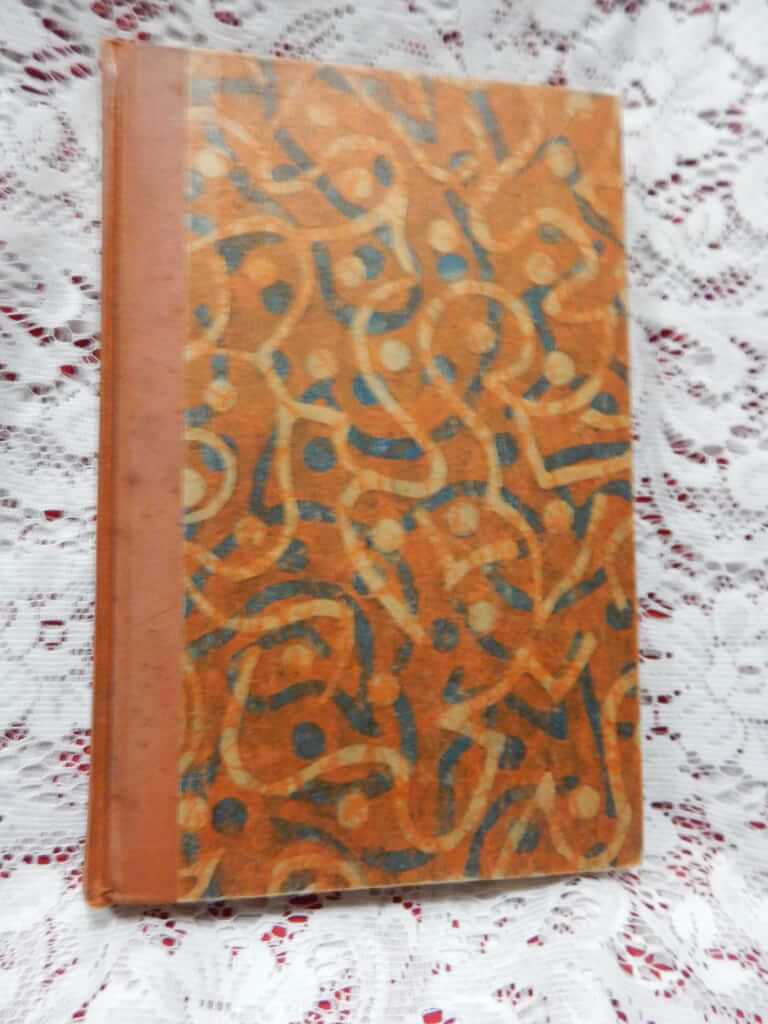 Sextravaganza, by M. de Crebillon le Fils, With and Introduction by Escar Levine, Illustrator unknown (Privately Printed [The Robin Hood House], New York 1932, one of 1111) 6.25"x9.5", 192pp, decorated boards, vellum spine with silver lettering, some spots and bumps but generally a good copy of this edition. Originally titled La Nuit et le moment ou les matines de Cythère [The night and the moment, or the mornings of Cythere], this is Robin Hood House's famous US "private" publication from the 30's and for a long time the only english translation available in the states. Written as a dialog, in the course of one night a man and a woman, each of whom is in love with somebody else, gradually warm up to each other until they forget past pleasures in present passions . Satire, irony, word-play and scandal abound. This edition states "only eleven hundred eleven copies have been issued for collectors of curiosa & sexualia". Claude Prosper Jolyot de Crébillon (1707-1777) was a French novelist. He was called "Crébillon fils" to distinguish him from his father, a famous tragedian, Prosper Jolyot de Crébillon. The publication of Tanzaï et Neadarne, histoire japonaise (1734), which contained thinly veiled attacks on the Papal bull Unigenitus, the cardinal de Rohan and others, landed him briefly in the prison at Vincennes. Publication of Le Sopha, conte moral, an erotic political satire, in 1742 forced him into exile from Paris for several months.
Sextravaganza, by M. de Crebillon le Fils, With and Introduction by Escar Levine, Illustrator unknown (Privately Printed [The Robin Hood House], New York 1932, one of 1111) 6.25"x9.5", 192pp, decorated boards, vellum spine with silver lettering, some spots and bumps but generally a good copy of this edition. Originally titled La Nuit et le moment ou les matines de Cythère [The night and the moment, or the mornings of Cythere], this is Robin Hood House's famous US "private" publication from the 30's and for a long time the only english translation available in the states. Written as a dialog, in the course of one night a man and a woman, each of whom is in love with somebody else, gradually warm up to each other until they forget past pleasures in present passions . Satire, irony, word-play and scandal abound. This edition states "only eleven hundred eleven copies have been issued for collectors of curiosa & sexualia". Claude Prosper Jolyot de Crébillon (1707-1777) was a French novelist. He was called "Crébillon fils" to distinguish him from his father, a famous tragedian, Prosper Jolyot de Crébillon. The publication of Tanzaï et Neadarne, histoire japonaise (1734), which contained thinly veiled attacks on the Papal bull Unigenitus, the cardinal de Rohan and others, landed him briefly in the prison at Vincennes. Publication of Le Sopha, conte moral, an erotic political satire, in 1742 forced him into exile from Paris for several months. -

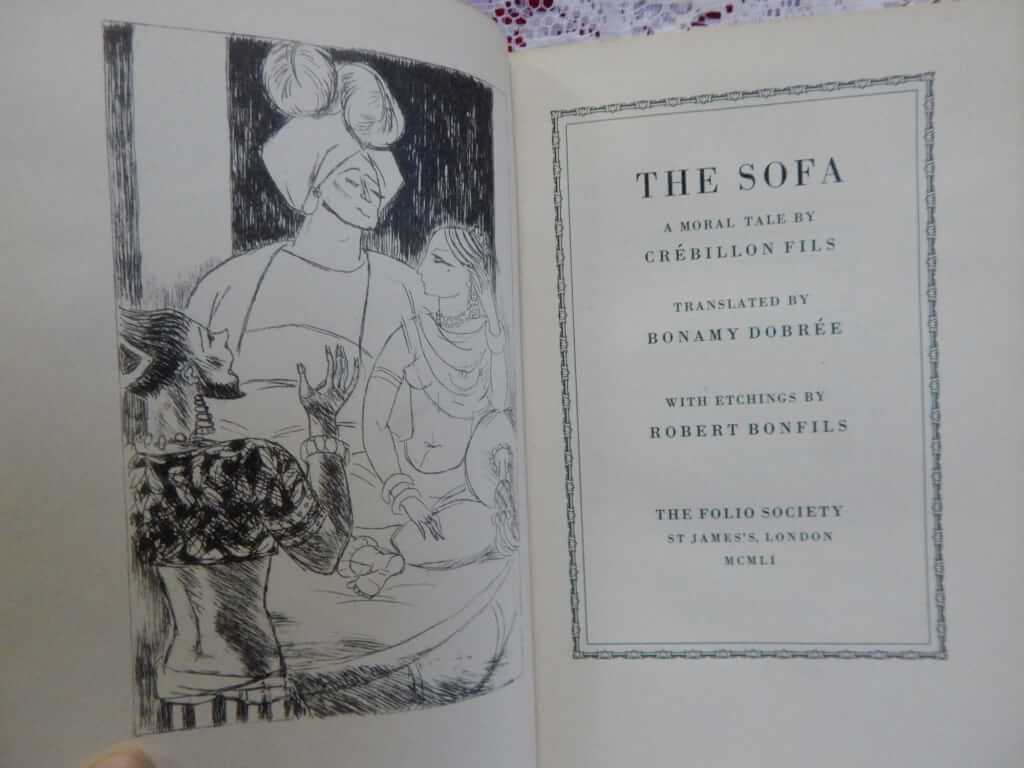 The Sofa, a moral tale by Crébillon fils, trans. Bonamy Dobrée, illus. Robert Bonfils (The Folio Society, St. James's, London, 1951) 6.75"x9.25", v+256, red boards with silver gilt decorations on spine, spine only slightly sunned, slipcase The Sofa: A Moral Tale (French: Le Sopha, conte moral) is a 1742 libertine novel by Claude Prosper Jolyot de Crébillon (Crebillon fils). It was first translated into English in the spring of 1742. The story concerns a young courtier, Amanzéï, whose soul in a previous life was condemned by Brahma to inhabit a series of sofas, and not to be reincarnated in a human body until two virgin lovers had consummated their passion for him. The novel is structured as a frame story in an oriental setting, explicitly evocative of the Arabian Nights, in which Amanzéï recounts the adventures of seven couples, which he witnessed in his sofa form, to the bored sultan Shah Baham (grandson of Shehryār and Scheherazade). The longest episode, that of Zulica, takes up nine chapters; the final episode concerns the teenage Zéïnis et Phéléas. Amanzéï, witnessing their innocent pleasure, is edified and freed through the experience of virtuous love. Many of the characters in the novel are satirical portraits of influential and powerful Parisians of Crébillon’s time; the author takes the opportunity to ridicule hypocrisy in its different forms (worldly respectability, virtue, religious devotion). Although the book was published anonymously and with a false imprint, Crébillon was discovered to be the author and was exiled to a distance of thirty leagues from Paris on April 7, 1742. He was able to return on July 22, after claiming that the work had been commissioned by Frederick II of Prussia and that it had been published against his will. Robert Bonfils started his illustration career in Chicago in the mid fifties, doing various commercial art assignments such as advertisements, lunch box decorations, catalog illustrations, magazine covers, interior story illustrations, record jacket covers, and book covers. He is best known for his covers for erotic, pulp fiction paperbacks.
The Sofa, a moral tale by Crébillon fils, trans. Bonamy Dobrée, illus. Robert Bonfils (The Folio Society, St. James's, London, 1951) 6.75"x9.25", v+256, red boards with silver gilt decorations on spine, spine only slightly sunned, slipcase The Sofa: A Moral Tale (French: Le Sopha, conte moral) is a 1742 libertine novel by Claude Prosper Jolyot de Crébillon (Crebillon fils). It was first translated into English in the spring of 1742. The story concerns a young courtier, Amanzéï, whose soul in a previous life was condemned by Brahma to inhabit a series of sofas, and not to be reincarnated in a human body until two virgin lovers had consummated their passion for him. The novel is structured as a frame story in an oriental setting, explicitly evocative of the Arabian Nights, in which Amanzéï recounts the adventures of seven couples, which he witnessed in his sofa form, to the bored sultan Shah Baham (grandson of Shehryār and Scheherazade). The longest episode, that of Zulica, takes up nine chapters; the final episode concerns the teenage Zéïnis et Phéléas. Amanzéï, witnessing their innocent pleasure, is edified and freed through the experience of virtuous love. Many of the characters in the novel are satirical portraits of influential and powerful Parisians of Crébillon’s time; the author takes the opportunity to ridicule hypocrisy in its different forms (worldly respectability, virtue, religious devotion). Although the book was published anonymously and with a false imprint, Crébillon was discovered to be the author and was exiled to a distance of thirty leagues from Paris on April 7, 1742. He was able to return on July 22, after claiming that the work had been commissioned by Frederick II of Prussia and that it had been published against his will. Robert Bonfils started his illustration career in Chicago in the mid fifties, doing various commercial art assignments such as advertisements, lunch box decorations, catalog illustrations, magazine covers, interior story illustrations, record jacket covers, and book covers. He is best known for his covers for erotic, pulp fiction paperbacks.
